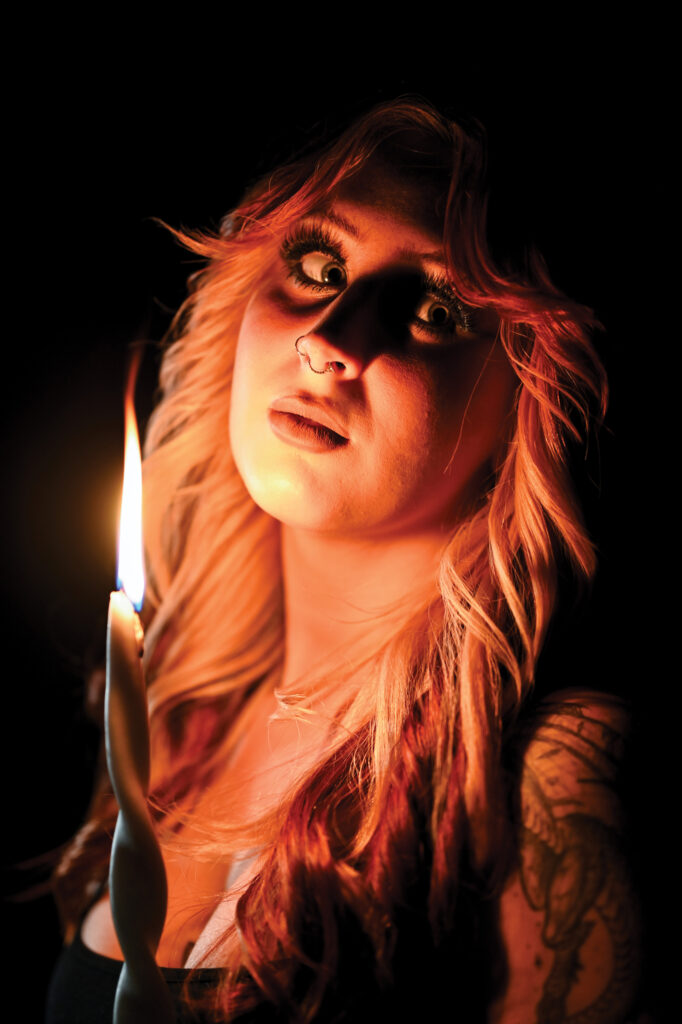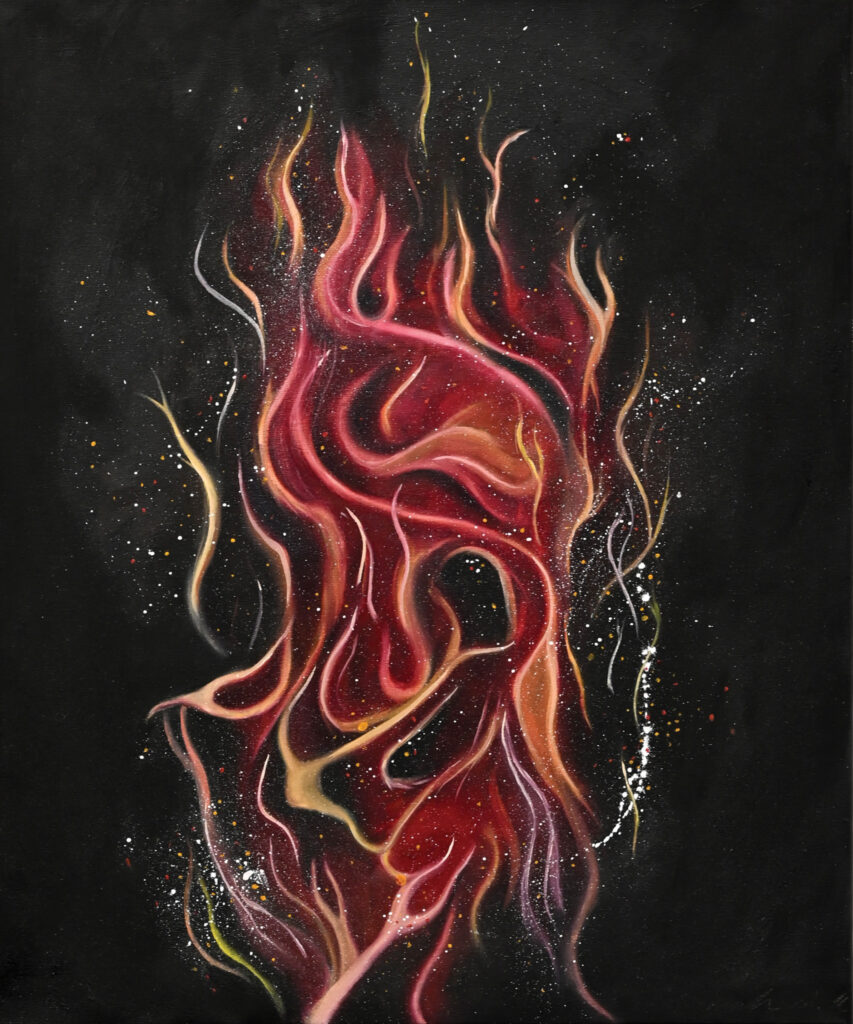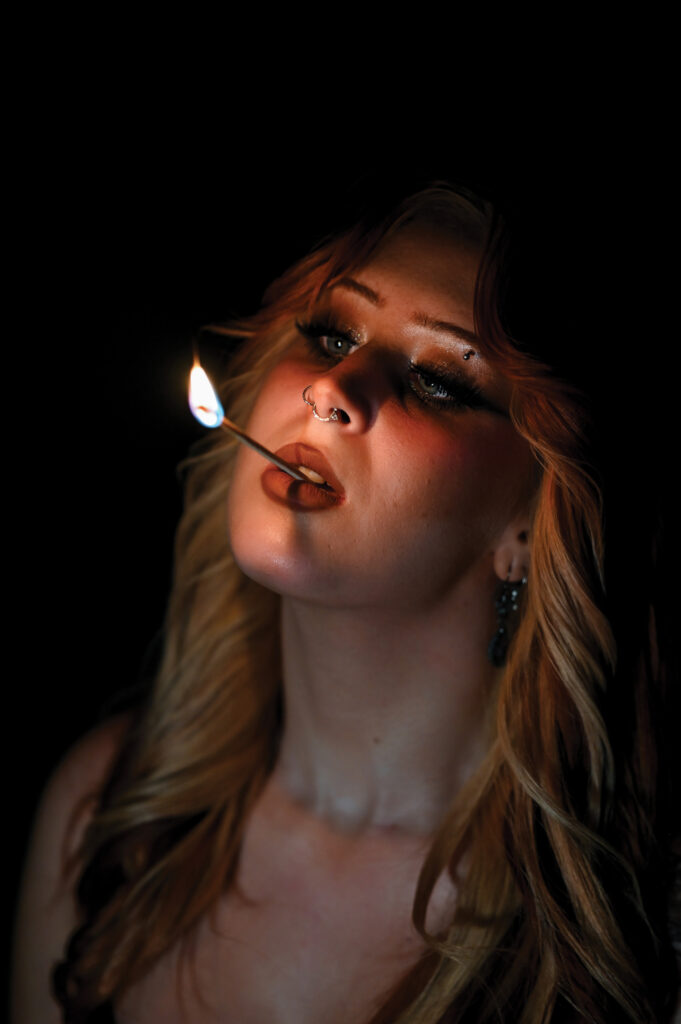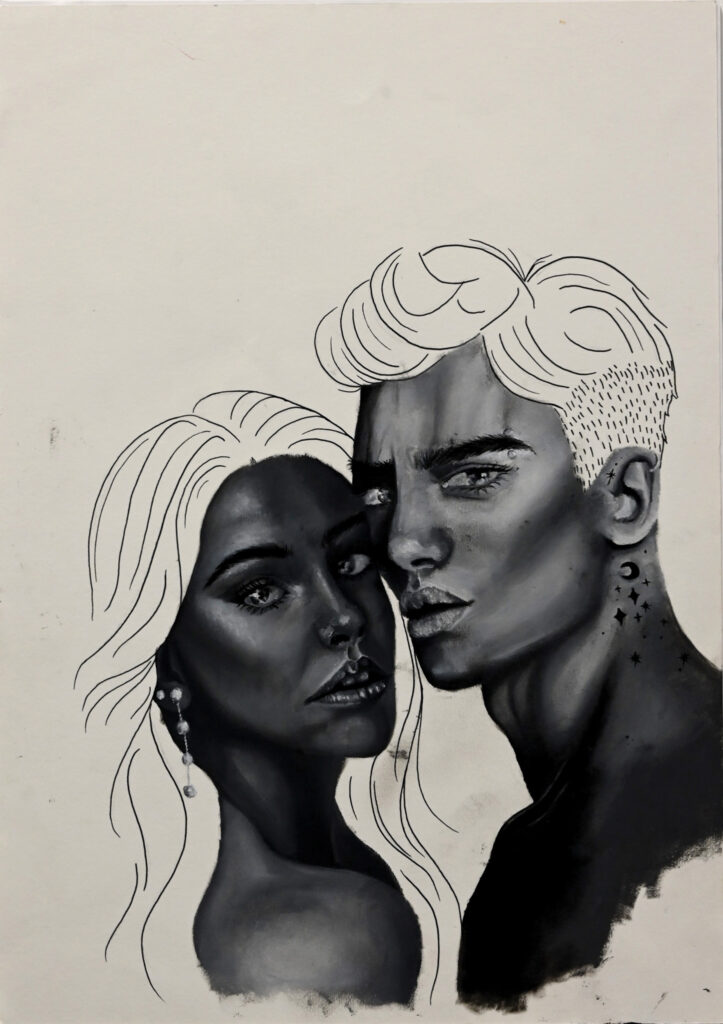

Alannah Hill
Fine Art
The eternal flame is a cross-cultural symbol of life, death, and the human desire for permanence. In my paintings, this symbol is explored through contemporary portraiture, drawing on classical traditions like Vanitas and Memento Mori to reflect on life’s transience and the beauty within impermanence. Fire, especially the eternal flame, embodies both destruction and creation, serving in many belief systems as a metaphor for memory, spiritual eternity, and transformation.
Historically, flames appeared in rituals – from the Temple of Vesta in ancient Greece to Christian iconography – representing continuity and the divine. I revisit these themes, presenting flame not only as illumination but as a quiet reminder that all things fade. Inspired by Vanitas still lifes and Memento Mori portraits, I use modern symbols – low-burning matches, glowing embers, and celestial elements like the moon and stars – to emphasize life’s fleeting nature and question material beauty.
The project also critiques societal ideals of perfection. I contrast hyper-idealized figures with raw, realistic portrayals – veins, freckles, wrinkles – revealing the beauty in flaws. This tension between ideal and real forms the core of my work, capturing fleeting yet honest expressions of eternity. In Pulchritudo Mortis (“Beauty of Death”), I depict a flame at its final moment, a metaphor for the fragile nature of existence.
Today, social media creates digital Vanitas – a curated, impermanent display of youth, beauty, and wealth. By using fire instead of artificial light, I evoke intimacy and vulnerability, questioning the durability of self-representation. What do we hope to preserve: perfect images, or moments that truly mattered?
What began as a fascination with fire became a meditation on love, loss, and memory. The eternal flame, in my work, is not a denial of death – but a brief, glowing reminder to fully live, however fleeting that spark may be.




